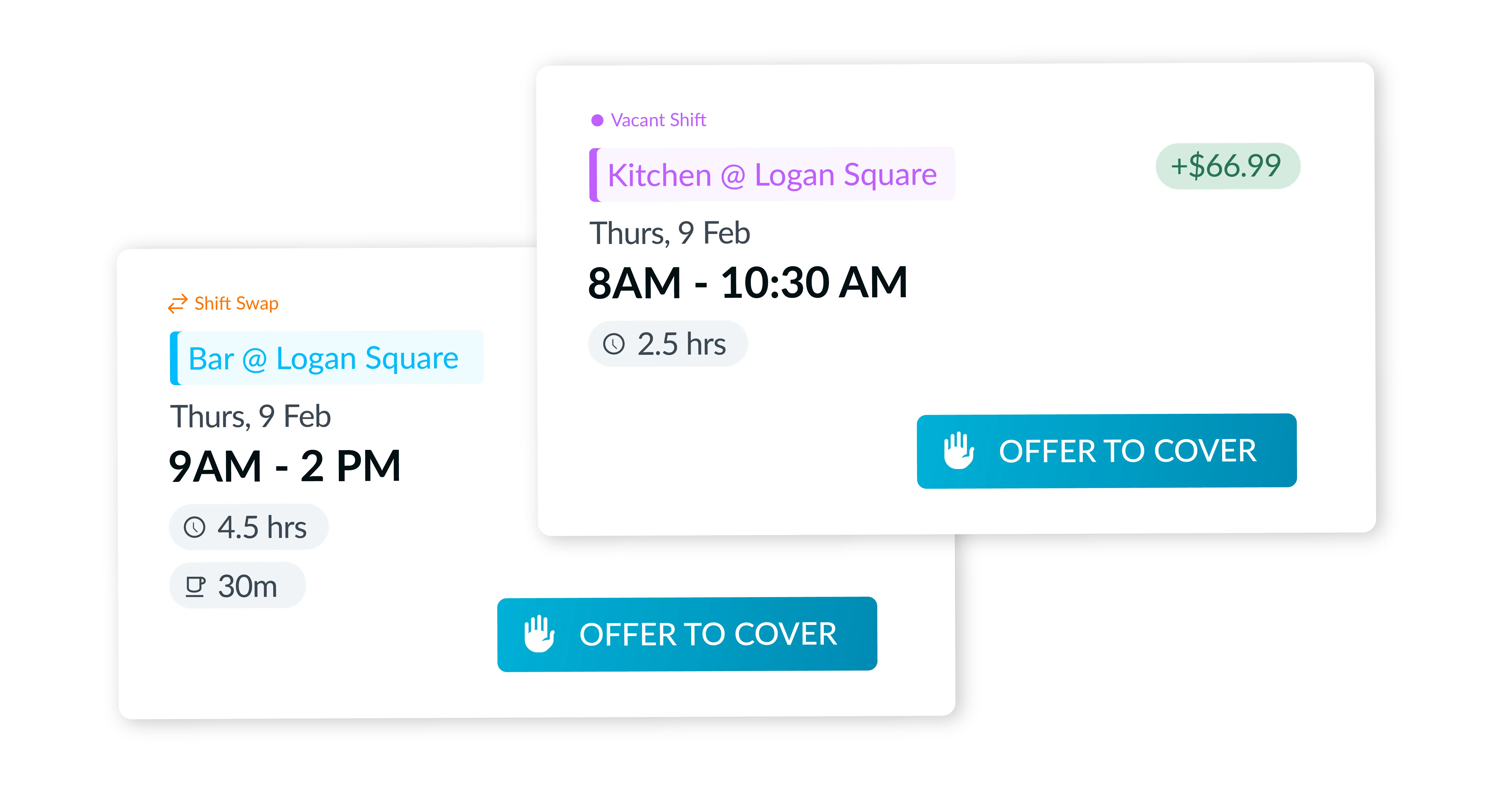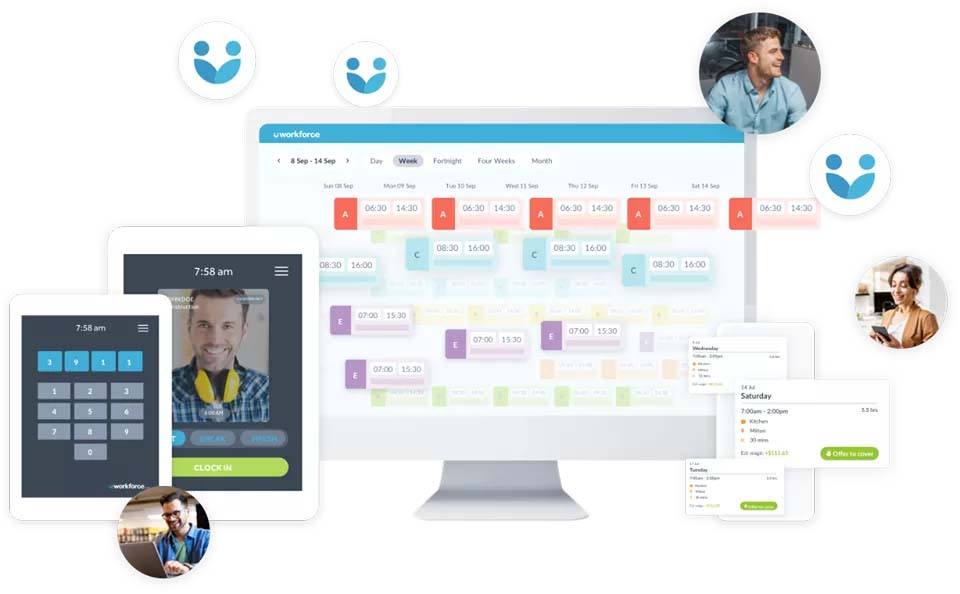Summary
-
Request and record shift swaps with a printable, free template
-
Make your shift swapping process more efficient and compliant by considering labor costs, schedule validations, and a bidding process
-
Manage employee shift swaps more efficiently with shift swapping software
Without the right documentation and protocol, letting your staff swap shifts can get a little messy. That’s probably why you are here, right?
Don’t worry; we’ve got you covered with this free template with fillable fields:
Shift Swap Request Form Template
Go ahead and make a copy, save it, print it, fold it, roll it – hell, you can even turn it into a paper airplane if you feel so inclined.
But hey, while you’re here, you might want to check out a few ways to improve the shift-swapping process at your business.
Five considerations for shift swaps
Allowing employees to swap their shifts can be as simple as a text message followed by a minor edit to the schedule. But a process as simple as this can run into problems, especially when you have a staff count over, say five. So here are a few ways to make shift swaps not only more efficient but cost-effective and compliant as well.
1. Allow for a bidding process
Sometimes, 1-to-1 shift swaps aren’t practical or efficient. Especially with larger workforces, singling out one coworker for a swap request misses out on potentially better-fit replacements.
As an alternative, consider letting staff members submit general swap requests, which anyone on their team can offer to cover. Managers can review the submissions, see all the bids, and decide on the most sensible swap. Using a bidding process like this eliminates the need for staff to hunt down a single person to swap with, and it allows for better collaboration and communication across your workforce.
Bidding processes also allow you to offer open shifts to your staff in case of last-minute call-outs or no-shows.
Webinar: How to Reduce No Call, No Shows
2. Don’t overlook qualifications & clashes
Whether you use 1-to-1 swaps or a bidding process, there is always a chance the wrong employee swaps in for another. Without proper oversight, you could have an unqualified employee taking a shift that requires special certification; this could land you in some hot water. You could also let a trade go through that accidentally clashes with an employee’s preexisting shift, leaving you with a broken schedule.
Make sure all shift swaps go through a schedule validation process to avoid these issues. Managers need an easy and immediate way to see missing qualifications and shift clashes; otherwise, they will slip through the cracks eventually.
3. Stay compliant with labor laws
Staying with the theme of schedule validations, it’s essential to know if a shift swap will violate any labor laws that apply to your workforce. For instance, if a swap puts someone over their maximum hours for the week or gives them a dreaded “clopening” shift, your organization could risk legal repercussions. Ensure the validation process catches these hazards before the DOL comes knocking.
4. Shift costs aren’t created equal
Once all compliance validations are accounted for, you should consider your labor costs. Ideally, you want to prevent shift swaps from costing you more. For instance, if a trade causes one employee to edge into overtime because their requested new shift is longer than their current one, you’ll be paying overtime rates that previously were never scheduled. Not great.
It’s a good idea to include wage costs, hourly rates, and work-hour totals on shift swap requests. Managers should be able to tell at a glance whether or not approving a trade will incur higher labor costs. This is where a bidding process comes in handy; managers can approve even swaps that result in no change to expected wage costs for the pay period.
5. Utilize the supercomputers in your employees’ pockets
Accounting for all the things above might seem like a lot of work – and it is if you are using paper shift swap forms. While you’ll technically have documentation of your swaps, you’ll have no real idea if you are doing them efficiently or compliantly. Luckily for you, there is a high likelihood that each of your employees has a supercomputer in their pocket at all times. Use them.
These days, employee scheduling apps come with real-time shift swapping functionality that makes shift change forms obsolete. Incorporating the modern-day extension of the human body into a workflow like shift swapping only makes sense, especially in fast-paced environments like hospitality and nursing. Shift changes take less time and are easier to manage when you condense all the admin work into a single, easy-to-use app.
Ditch the template: let the software do the work
A paper shift switch form – even ours – will not cut it if you want to manage shift swaps correctly. With Workforce.com’s shift swapping software, you can automatically validate every trade request for qualifications, maximum hours, employee availability, shift clashes, and overtime.
Once approved, everyone gets notified over the app, and the work schedule is automatically updated accordingly. Sounds nice, right?
Leave the templates behind and get started with smarter shift swapping by contacting us today.
















